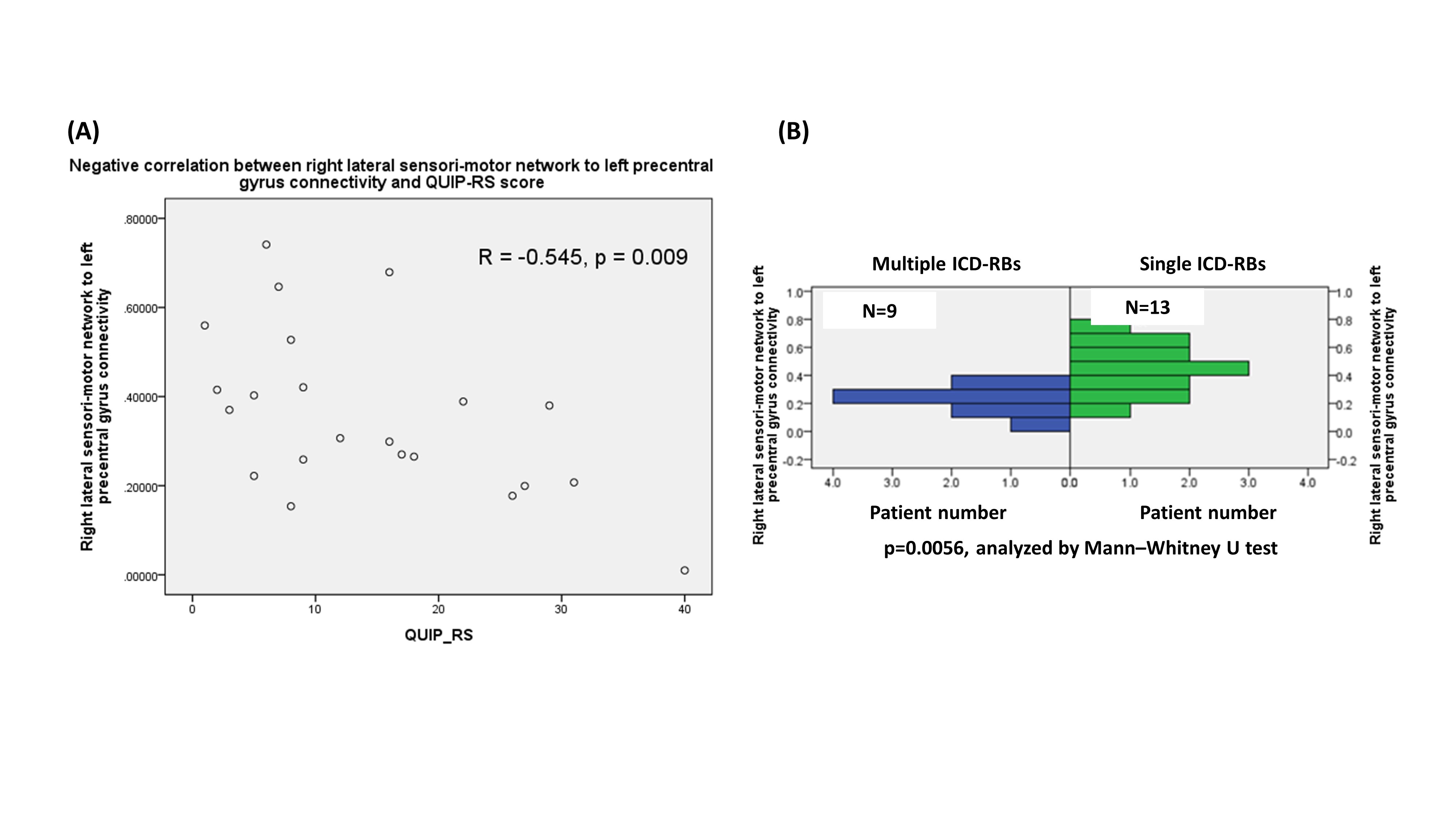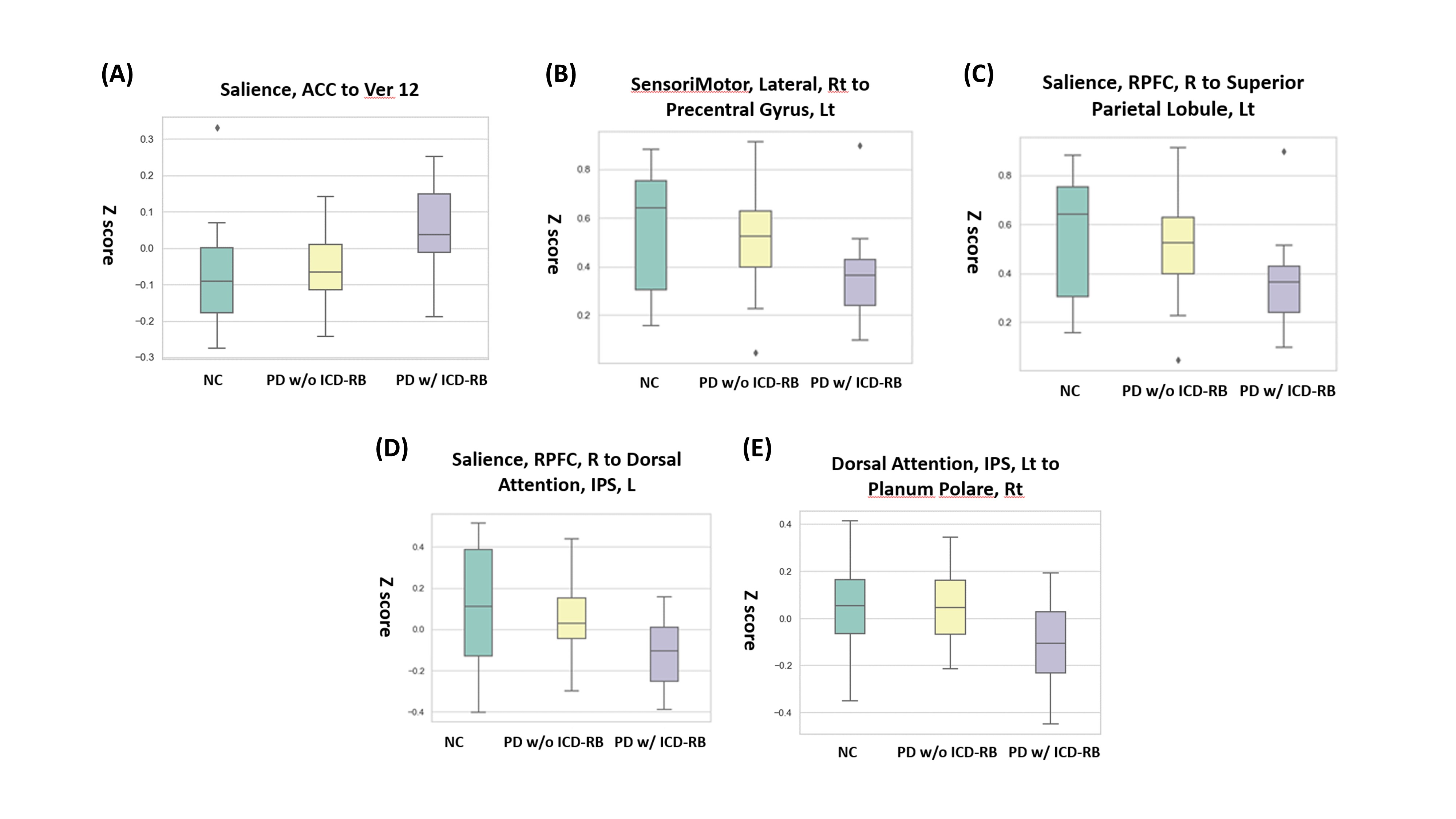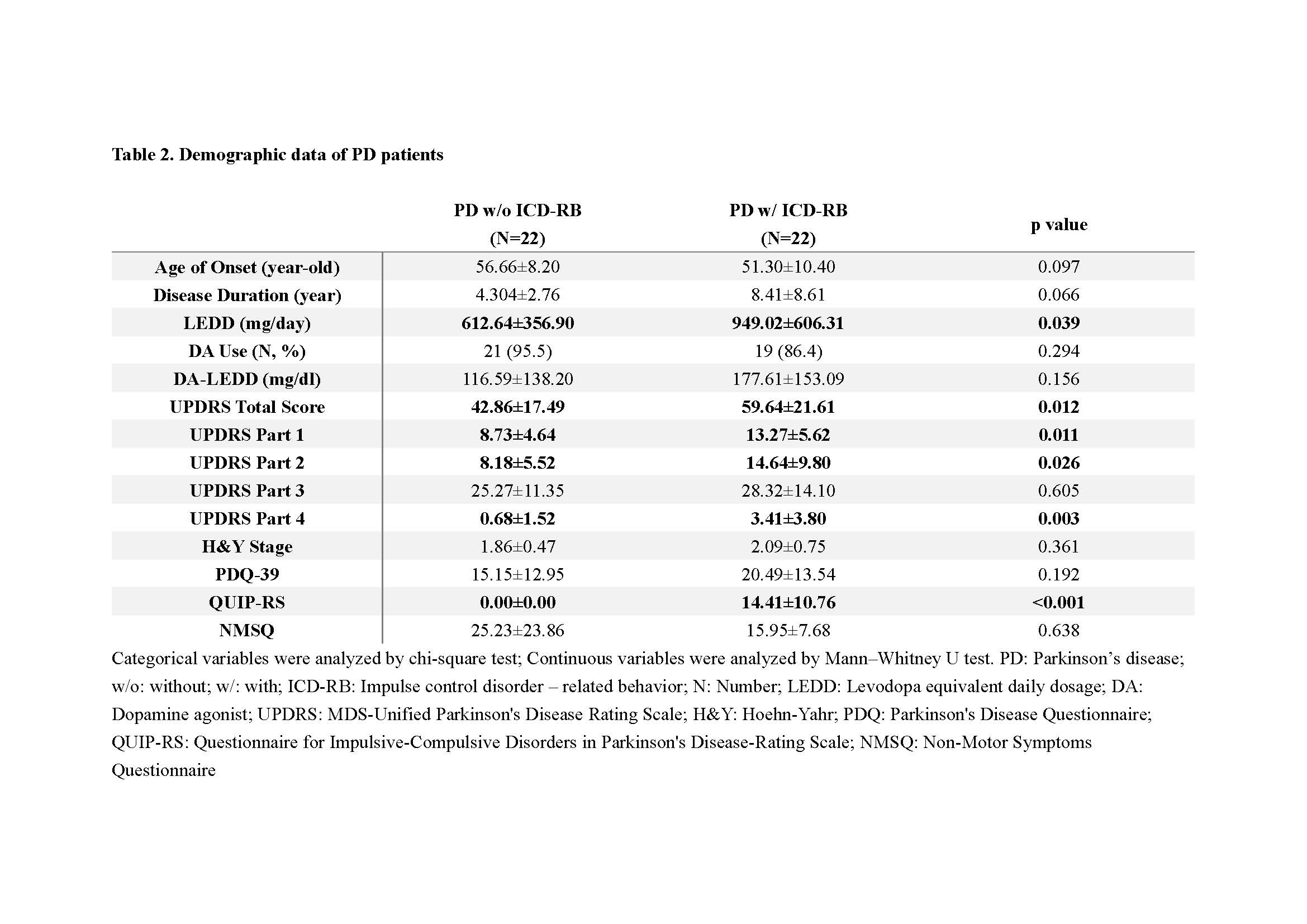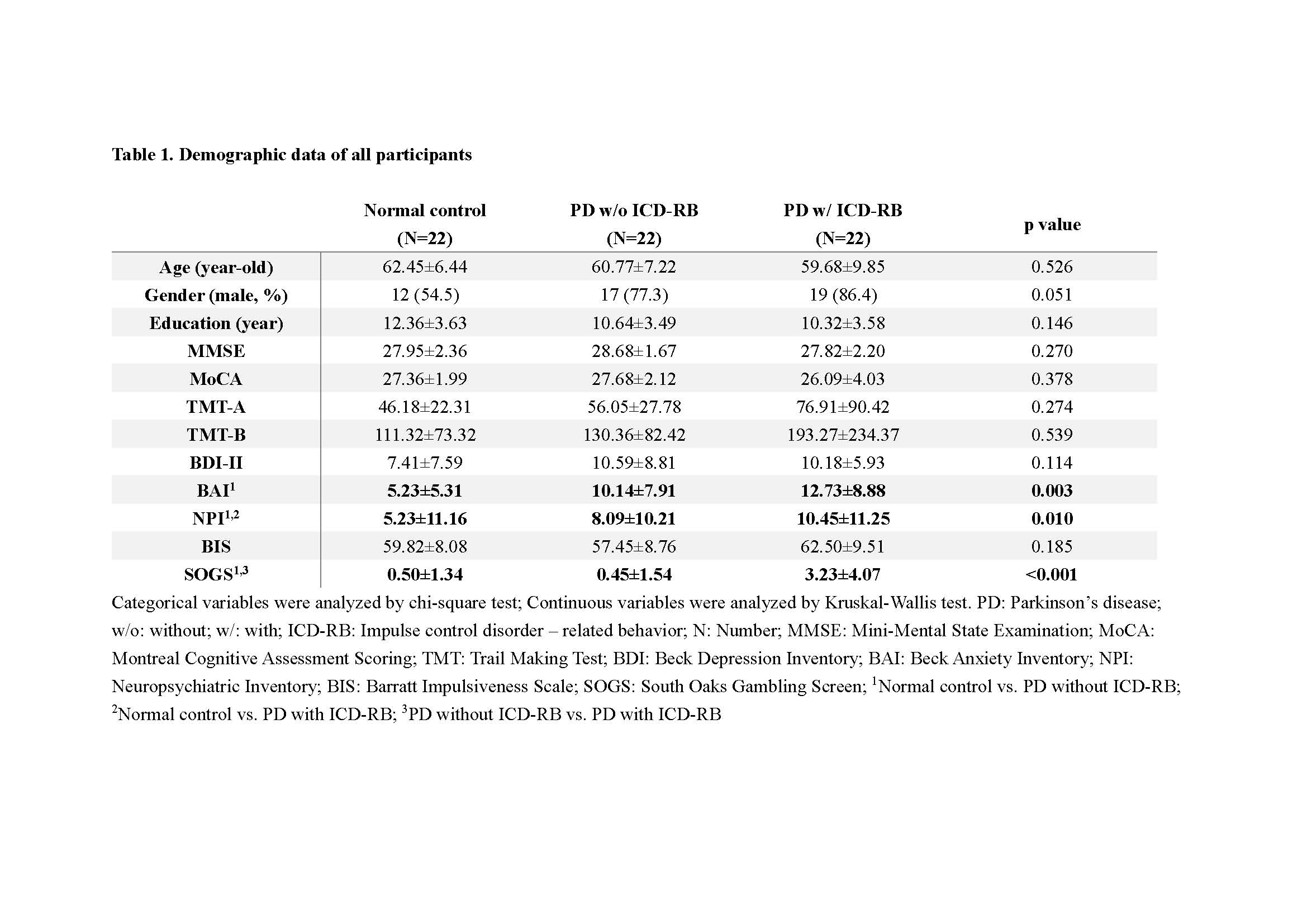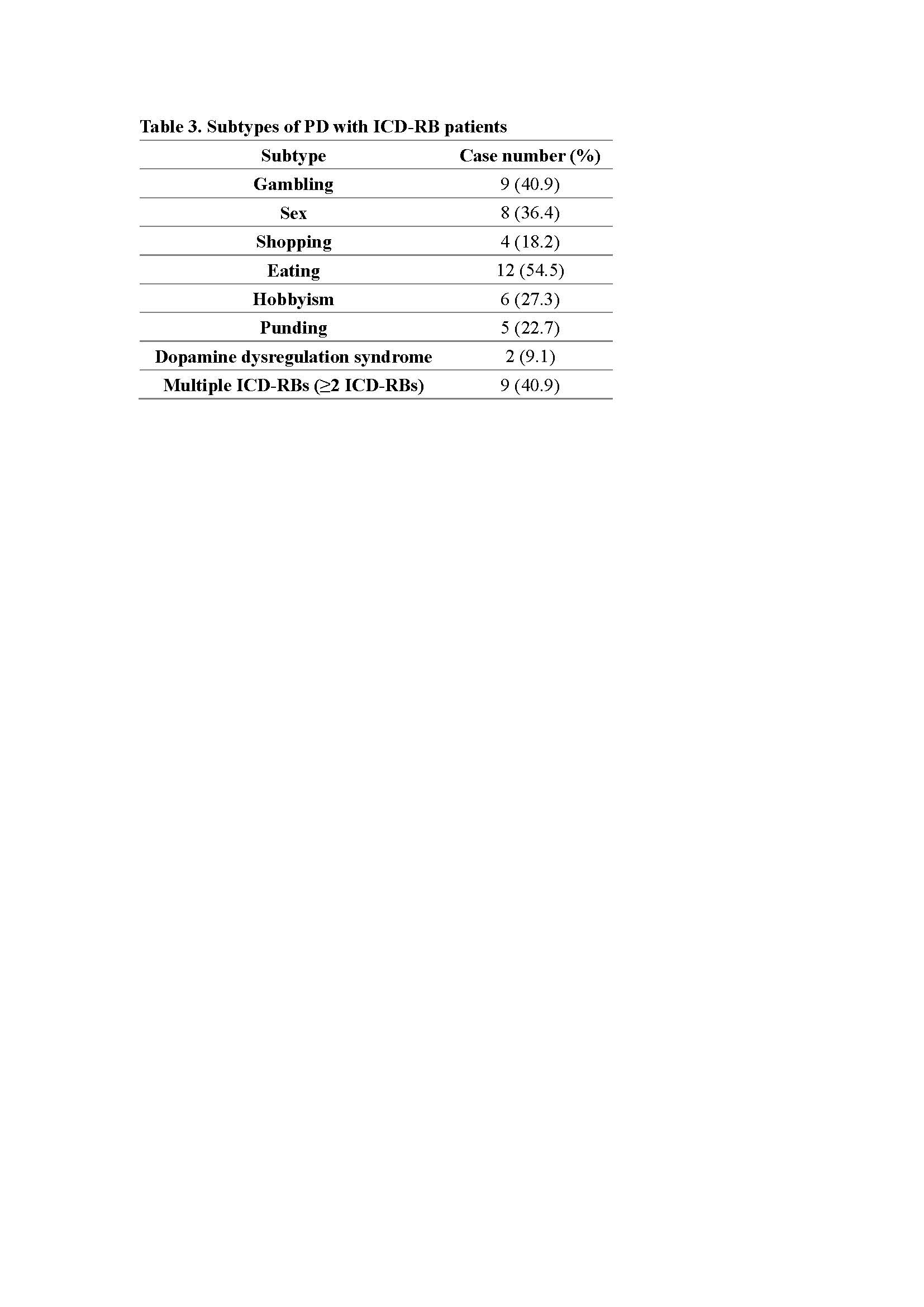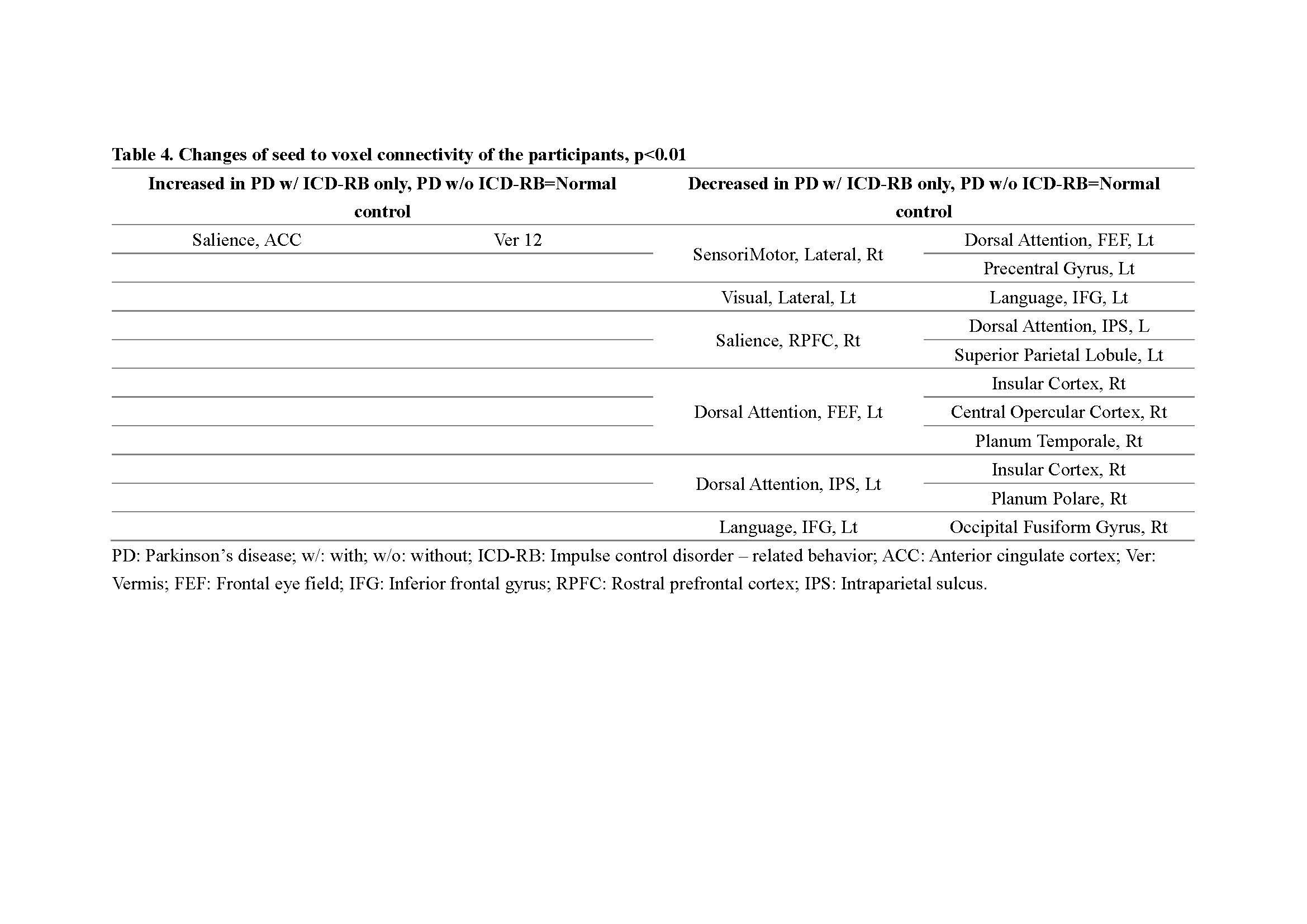Category: Parkinson's Disease: Neuroimaging
Objective: To investigate possible brain network indicators in Parkinson’s disease (PD) with impulse control disorder and related behaviours (ICD-RBs) using resting state functional MRI (rs-fMRI)
Background: 3.1-52.7% of PD patients suffer from ICD-RBs, which cause negative impact to patients’ quality of life.1, 2 Alteration of connectivity within the intrinsic brain networks had been reported in PD patients with ICD.3 Using rs-fMRI, we hope to further investigate the cross talk within and outside the intrinsic large scale brain networks in PD with (w/) ICD-RBs.
Method: PD patients w/ and w/o ICD-RBs and normal control (NC) volunteers were recruited from Taichung Veteran General Hospital and China Medical University Hospital (CMUH) between March 2016 and October 2020. All participants received serial neuropsychiatric evaluation and fMRI examination. Standard image preprocessing methods were conducted using CONN functional connectivity tool box (18.b). Z scores of the connectivity between ROIs from the 8 intrinsic brain networks and 167 whole brain ROIs set in CONN toolbox were extracted for group comparison. Clinical and imaging data were then analyzed using the software, SPSS, Version 22.0.
Results: Twenty-two PD w/ ICD-RBs, 22 PD w/o ICD-RBs and 22 NC subjects were recruited. (Tab. 1-3) Hierarchical trend of connectivity changes among NCs, PD w/o ICD-RBs and PD w/ ICD-RBs subjects showed increased pattern between anterior cingulate cortex of the SN and Vermis 12, while it decreased between right lateral sensori-motor network (SMN) and left precentral gyrus, right rostral prefrontal cortex (RPFC) of the SN and left superior parietal lobules, right RPFC of the SN and left inferior parietal sulcus (IPS) of the dorsal attention network (DAN), and left IPS of the DAN and right palnum polare. (Tab. 4, Fig. 1) Strength of connectivity between right lateral SMN to left precentral gyrus correlated negatively with QUIP-RB scores and complexity of ICD-RBs. (Fig. 2)
Conclusion: Increased communication in the limbic cerebro-cerebellum network may be progressive from heathy, PD to the occurrence of PD w/ ICD-RBs.4 Decoupling of effective integration of perceptual information with somatomotor outputs may associate with severity and complexity of ICD-RB in PD.5 Weakening of the top-down attention control system to the salience network is meaningful in contributing to ICD-RBs in PD and may affect the ICD subtyping.6
References: 1. Cossu G, Rinaldi R, Colosimo C. The rise and fall of impulse control behavior disorders. Parkinsonism Relat Disord 2018;46 Suppl 1:S24-S29.
2. Phu AL, Xu Z, Brakoulias V, et al. Effect of impulse control disorders on disability and quality of life in Parkinson’s disease patients. J Clin Neurosci 2014;21:63-66.
3. Tessitore A, De Micco R, Giordano A, et al. Intrinsic brain connectivity predicts impulse control disorders in patients with Parkinson’s disease. Mov Disord 2017;32:1710-1719.
4. Pierce JE, Peron J. The basal ganglia and the cerebellum in human emotion. Soc Cogn Affect Neurosci 2020;15:599-613.
5. Herman AM, Critchley HD, Duka T. Trait Impulsivity Associated With Altered Resting-State Functional Connectivity Within the Somatomotor Network. Front Behav Neurosci 2020;14:111.
6. Carretie L. Exogenous (automatic) attention to emotional stimuli: a review. Cogn Affect Behav Neurosci 2014;14:1228-1258.
To cite this abstract in AMA style:
YJ. Guo, CM. Chen, JR. Duann, MK. Lu, MH. Chang. Diverse alteration of brain networking in PD with ICD-RBs [abstract]. Mov Disord. 2022; 37 (suppl 2). https://www.mdsabstracts.org/abstract/diverse-alteration-of-brain-networking-in-pd-with-icd-rbs/. Accessed December 19, 2025.« Back to 2022 International Congress
MDS Abstracts - https://www.mdsabstracts.org/abstract/diverse-alteration-of-brain-networking-in-pd-with-icd-rbs/

